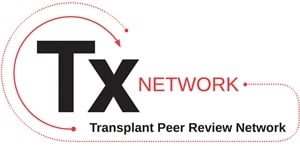Journal list menu
Export Citations
Download PDFs
COVER IMAGE
American Journal of Transplantation: Volume 19, Number 4, April 2019
- First Published: 25 March 2019
On the Cover: Neutrophil extracellular traps (NETs) are known to be active in the innate immune response to pulmonary bacteria. However, they are inherently cytolytic and, as such, can cause bystander injury to the delicate structures in the lung. DNAse treatment is now used in several pulmonary inflammatory diseases to limit this injury. In this issue of AJT, Scozzi et al (page 1011), through elegant experiments in mice, demonstrate that NET fragments generated by DNAse treatment trigger toll-like receptor signaling in antigen-presenting cells that enhance alloimmunity and inhibit immunosuppression-mediated lung transplant tolerance. This study underscores the interplay between innate and acquired immunity and highlights new mechanisms for alloimmune activation in the lung. Also in this issue, Becker and Nissenson (page 995) introduce their Viewpoint on the Dialysis PATIENTS Demonstration Act, countered by a thoughtful editorial by Gill and Wiseman (page 973) providing their thoughts on the implications of this legislation for transplantation. Cover design by Megan Llewellyn, Duke University Department of Surgery.
THE AJT REPORT
CMS Proposes New Quality Metric
- Pages: 967-968
- First Published: 25 March 2019
This month's installment of “The AJT Report” explores the potential effects of a new quality metric proposed by the Centers for Medicare & Medicaid Services that is designed to boost transplant access for dialysis patients. We also report on the recent successful transplant of a hepatitis C–positive heart to the director of New York University Langone Health's Transplant Center.
LITERATURE WATCH
Treg Respiration
- Page: 969
- First Published: 25 March 2019
By using mice with alterations in mitochondrial complex III in Tregs, the authors of the featured manuscript demonstrate the essential role of mitochondrial respiration for Treg suppressor function and for the prevention of lymphoproliferation and autoimmunity.
EDITORIALS
FDA jeopardizes the lives of lung transplant recipients and in the process severely increases the cost to develop new immunosuppression
- Pages: 971-972
- First Published: 14 December 2018
The authors express concern that recent FDA rules will make common immunosuppressive protocols unavailable to Medicare lung transplant recipients.
Bandages will not fix a fractured system of chronic kidney disease care: Why the Dialysis PATIENTS Demonstration Act cannot be supported by the transplant community
- Pages: 973-974
- First Published: 20 November 2018
This editorial presents concerns about efforts to advance an integrated dialysis care plan that does not prioritize prevention of kidney failure and transplantation for patients who develop end-stage kidney disease. Read Becker and Nissenson's viewpoint on page 995.
MINIREVIEW
Donor organ intervention before kidney transplantation: Head-to-head comparison of therapeutic hypothermia, machine perfusion, and donor dopamine pretreatment. What is the evidence?
- Pages: 975-983
- First Published: 31 July 2018
This article examines therapeutic donor hypothermia, dopamine donor pretreatment, and hypothermic pulsatile machine perfusion for the amelioration of early graft dysfunction after kidney transplantation on the basis of the most prominently published clinical trials in this field indicating that machine perfusion is less effective compared to the donor intervention strategies.
MEETING REPORT
Report from the American Society of Transplantation on frailty in solid organ transplantation
- Pages: 984-994
- First Published: 01 December 2018
The authors summarize the proceedings of the American Society of Transplantation consensus conference on frailty in solid organ transplantation, an emerging concept with potential consequences for patient risk stratification and optimization that arises before and after transplant.
PERSONAL VIEWPOINT
Greater access to transplantation should be a priority: A view of the Dialysis PATIENTS Demonstration Act
- Pages: 995-997
- First Published: 24 September 2018
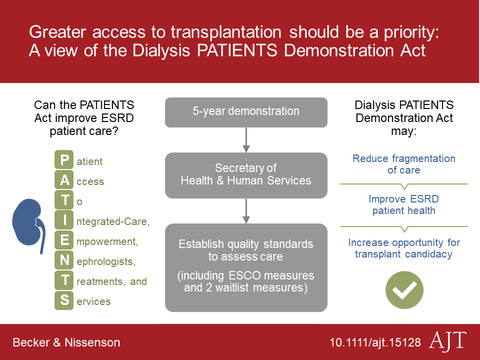
Integrated care for patients with end-stage kidney disease is expanding and new care models have to focus not only on quality, outcomes, and cost-effectiveness, but also on access to all forms of end-stage kidney disease treatment, including kidney transplantation. Read an editorial from Gill and Wiseman on page 973.
ORIGINAL ARTICLES
Basic Science
Peritransplant VLA-4 blockade inhibits endogenous memory CD8 T cell infiltration into high-risk cardiac allografts and CTLA-4Ig resistant rejection
- Pages: 998-1010
- First Published: 29 October 2018
A short peritransplant course of anti-VLA-4 antibody inhibits endogenous donor-reactive memory T cell infiltration into higher risk heart allografts subjected to prolonged cold ischemic storage prior to transplant and reverses CTLA-4Ig resistant graft rejection.
Neutrophil extracellular trap fragments stimulate innate immune responses that prevent lung transplant tolerance
- Pages: 1011-1023
- First Published: 31 October 2018
Ex vivo perfusion induces a time- and perfusate-dependent molecular repair response in explanted porcine lungs
- Pages: 1024-1036
- First Published: 19 September 2018
Gene expression analysis of explanted porcine lungs demonstrates that ex vivo perfusion induces a time- and perfusate-dependent molecular repair response, which correlates with relevant functional and histological parameters.
Diagnostic application of kidney allograft-derived absolute cell-free DNA levels during transplant dysfunction
- Pages: 1037-1049
- First Published: 12 October 2018
The absolute measurements of plasma graft-derived and total cell-derived DNA, with the relative measure of calculated graft fraction, have good diagnostic performance for antibody-mediated rejection in kidney transplant recipients undergoing for-cause biopsy.
Circulating delta-like Notch ligand 1 is correlated with cardiac allograft vasculopathy and suppressed in heart transplant recipients on everolimus-based immunosuppression
- Pages: 1050-1060
- First Published: 12 October 2018
Delta-like Notch ligand 1 is expressed in the myocardium and elevated in the plasma after heart transplantation, reduced by everolimus, and associated with cardiac allograft vasculopathy.
Opposite acute potassium and sodium shifts during transplantation of hypothermic machine perfused donor livers
- Pages: 1061-1071
- First Published: 09 November 2018
The authors examine the effect of hypothermic oxygenated machine perfusion of donor livers on ex situ and in vivo potassium and sodium shifts and find that although hyperkalemia frequently occurs after reperfusion of a conventionally preserved liver, reperfusion of a hypothermic machine-perfused liver leads to a decrease in blood potassium or even hypokalemia in the recipient.
Clinical Science
Impact of MBL2 gene polymorphisms on the risk of infection in solid organ transplant recipients: A systematic review and meta-analysis
- Pages: 1072-1085
- First Published: 31 October 2018
Bidirectional transfer of Anelloviridae lineages between graft and host during lung transplantation
- Pages: 1086-1097
- First Published: 11 September 2018
Metagenomic sequence analysis reveals the transfer of whole viral populations from donor organ to recipient and from recipient into allograft during lung transplantation.
Multiple listing in lung transplant candidates: A cohort study
- Pages: 1098-1108
- First Published: 25 September 2018
Multiple listing in US lung transplant candidates is associated with specific clinical and socioeconomic characteristics, with multiple-listing candidates having a greater adjusted likelihood of undergoing lung transplant as compared to single-listing candidates.
Development and validation of an optimized prediction of mortality for candidates awaiting liver transplantation
- Pages: 1109-1118
- First Published: 09 November 2018
This study utilizes novel machine learning techniques for the development of an optimized prediction of mortality (OPOM) for candidates awaiting liver transplantation and suggests OPOM's ability to outperform Model for End-Stage Liver Disease scores, achieving a more equitable and efficient liver allocation.
Multicenter investigation of the reliability and validity of the live donor assessment tool as an enhancement to the psychosocial evaluation of living donors
- Pages: 1119-1128
- First Published: 10 November 2018
The live donor assessment tool can enhance the psychosocial evaluation of living donors and help identify those who might require postdonation psychosocial counseling.
The national landscape of deceased donor kidney transplantation for the highly sensitized: Transplant rates, waitlist mortality, and posttransplant survival under KAS
- Pages: 1129-1138
- First Published: 29 October 2018
The authors examine the current state of deceased donor kidney transplantation for highly sensitized candidates under the Kidney Allocation System and find that transplant rates have become more balanced across calculated panel reactive antibody levels, though waitlist mortality has not significantly changed.
Monitoring of alphatorquevirus DNA levels for the prediction of immunosuppression-related complications after kidney transplantation
- Pages: 1139-1149
- First Published: 22 October 2018
In this single-center prospective cohort study, the kinetics of plasma alphatorquevirus (highly prevalent, nonpathogenic anelloviruses) DNA levels were found to be associated with the occurrence of overall infection and immunosuppression-related adverse events in kidney transplant recipients, suggesting a potential role as a surrogate marker of the overall amount of posttransplant immunosuppression.
MOC
Induction immunosuppression agents as risk factors for incident cardiovascular events and mortality after kidney transplantation
- Pages: 1150-1159
- First Published: 29 October 2018
Lymphocyte-depleting induction agents are not associated with a higher risk of cardiovascular events kidney transplant recipients.
Effect of recipient gender and donor-specific antibodies on antibody-mediated rejection after heart transplantation
- Pages: 1160-1167
- First Published: 04 October 2018
The gender difference in antibody-mediated rejection after heart transplantation is not explained only by donor-specific antibodies, suggesting a gender-related difference in the severity of immunization.
Chronic rejection of human face allografts
- Pages: 1168-1177
- First Published: 12 October 2018
Biopsies of face transplant recipients reveal chronic rejection similar to certain autoimmune cutaneous diseases.
C-peptide levels do not correlate with pancreas allograft failure: Multicenter retrospective analysis and discussion of the new OPT definition of pancreas allograft failure
- Pages: 1178-1186
- First Published: 19 September 2018
The authors present a new definition of pancreas allograft failure, which excludes a C-peptide cutoff.
In-hospital and 90-day outcomes after total pancreatectomy with islet autotransplantation for pediatric chronic and acute recurrent pancreatitis
- Pages: 1187-1194
- First Published: 29 October 2018
A retrospective review of 20 pediatric patients undergoing total pancreatectomy with islet autotransplantation demonstrates that this is an effective treatment option for pediatric acute recurrent and chronic pancreatitis, allowing patients to be weaned from opioid, parenteral nutrition, and exogenous insulin use within 90 days posttransplant with significant gains in health-related quality of life.
BRIEF COMMUNICATIONS
Excellent long-term outcome with lungs obtained from uncontrolled donation after circulatory death
- Pages: 1195-1201
- First Published: 23 December 2018
A simple preservation technique may recover lungs from uncontrolled donation after circulatory death with excellent long-term posttransplant outcomes.
Pretransplant sequential hypo- and normothermic machine perfusion of suboptimal livers donated after circulatory death using a hemoglobin-based oxygen carrier perfusion solution
- Pages: 1202-1211
- First Published: 26 December 2018
This clinical cohort study indicates that a combination of hypo- and normothermic machine perfusion, using a preservation fluid containing an hemoglobin-based oxygen carrier, is feasible and provides a tool to resuscitate and select initially declined high-risk donor livers that can be transplanted successfully.
Public attitudes toward contemporary issues in liver allocation
- Pages: 1212-1217
- First Published: 23 December 2018
Surveys of attitudes around liver donation evaluated using conjoint analysis and clarifying follow-up questions identify differences between allocation rules and public preferences with respect to incorporating outcomes after transplant, prioritizing US citizens or residents, keeping organs local, and including cost in allocation decisions.
Phase I study of single-dose pharmacokinetics and pharmacodynamics of belatacept in adolescent kidney transplant recipients
- Pages: 1218-1223
- First Published: 23 December 2018
Results from a phase I study of adolescent renal transplant recipients administered a single intravenous infusion of belatacept at 7.5 mg/kg show comparable pharmacokinetic and pharmacodynamic values to those obtained historically from healthy adult volunteers given a single dose of belatacept (10 mg/kg) and adult kidney transplant recipients administered multiple doses of belatacept (5mg/kg/dose).
CASE REPORT
Transplant tourism complicated by life-threatening New Delhi metallo-β-lactamase-1 infection
- Pages: 1224-1228
- First Published: 03 October 2018
Exemplifying the dangers of transplant tourism, a patient who traveled to Pakistan for a commercial kidney transplant developed a life-threatening infection from New Delhi metallo-β-lactamase–1–producing Enterobacter cloacae.
REPORTS FROM THE CDC: MMWR
Advisory Committee on Immunization Practices recommended immunization schedule for children and adolescents aged 18 years or younger — United States, 2019
- Pages: 1229-1231
- First Published: 25 March 2019
The CDC provides an update on immunization practices for children and adolescents under 18 years old.
Advisory Committee on Immunization Practices recommended immunization schedule for adults aged 19 years or older — United States, 2019
- Pages: 1232-1235
- First Published: 25 March 2019
This report updates the immunization practices for adults 19 years old and older.
IMAGES IN TRANSPLANTATION
CME
Pushing the envelope: Successful liver transplant using a donor graft with grade V liver injury
- Pages: 1236-1238
- First Published: 25 March 2019
LETTERS TO THE EDITOR
Robot-assisted laparoscopic partial nephrectomy with renal artery clamping using an endovascular balloon catheter for an allograft kidney tumor: A new perspective to manage renal vascular control?
- Pages: 1239-1240
- First Published: 29 October 2018
Do we still need to demonstrate the survival benefit of pancreas transplantation?
- Pages: 1241-1242
- First Published: 12 November 2018
Yes, we do need to demonstrate the survival advantage of pancreas after kidney transplantation
- Pages: 1243-1244
- First Published: 18 December 2018
Normothermic machine perfusion may prevent regulated cell death following renal ischemia-reperfusion injury
- Page: 1245
- First Published: 20 November 2018
Is the hub-and-spoke model of care delivery a possible answer to geographical variation in liver transplant outcomes?
- Pages: 1246-1247
- First Published: 09 November 2018
Response to “Is the hub-and-spoke model of care delivery a possible answer to geographical variation in liver transplant outcomes?”
- Pages: 1248-1249
- First Published: 23 December 2018




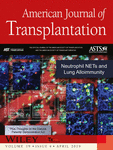
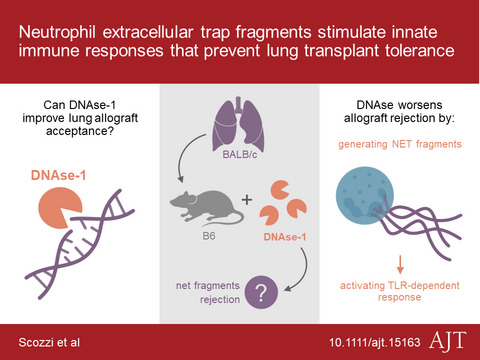
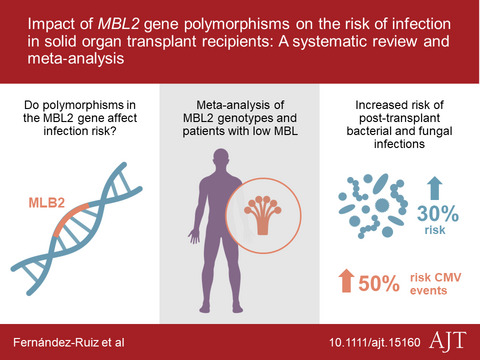
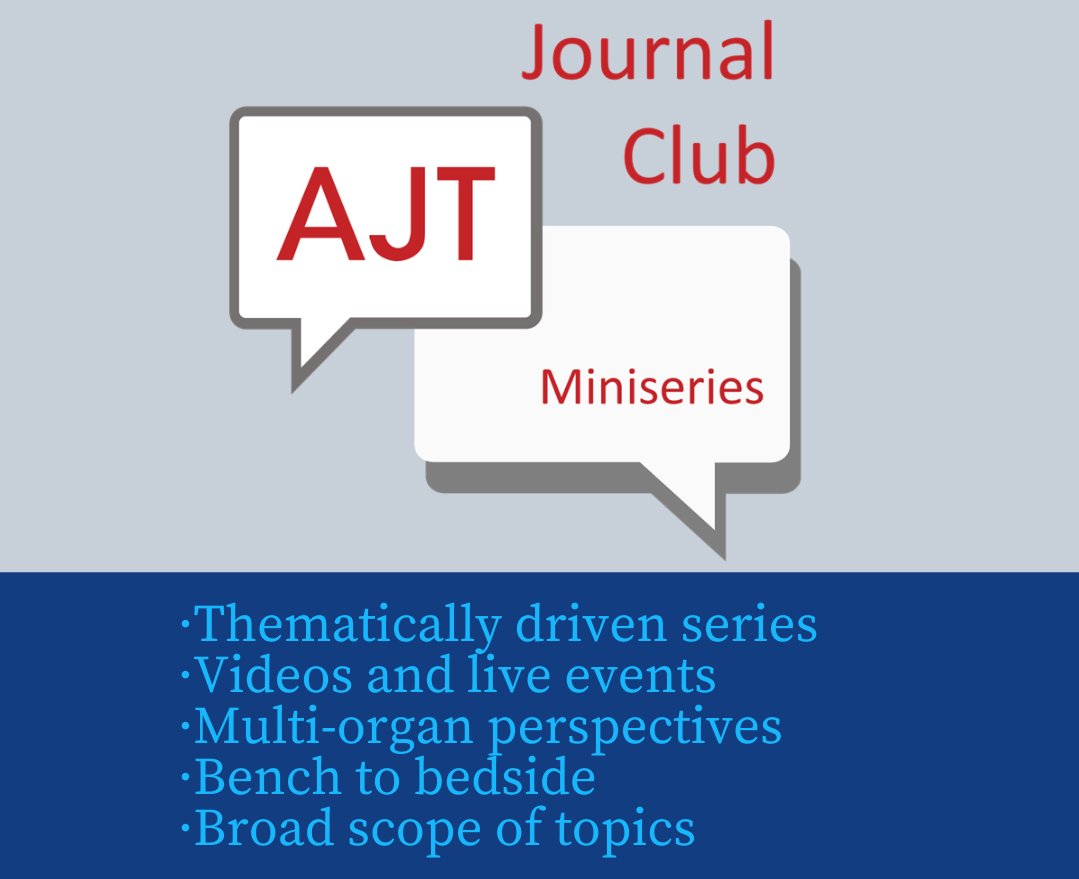



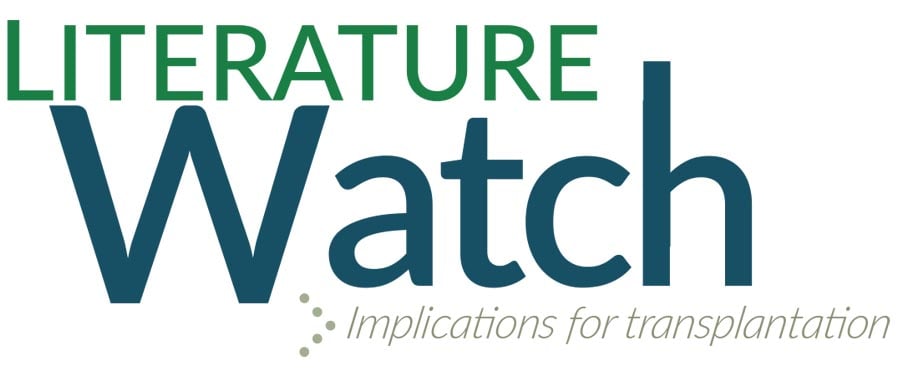
.jpg)
